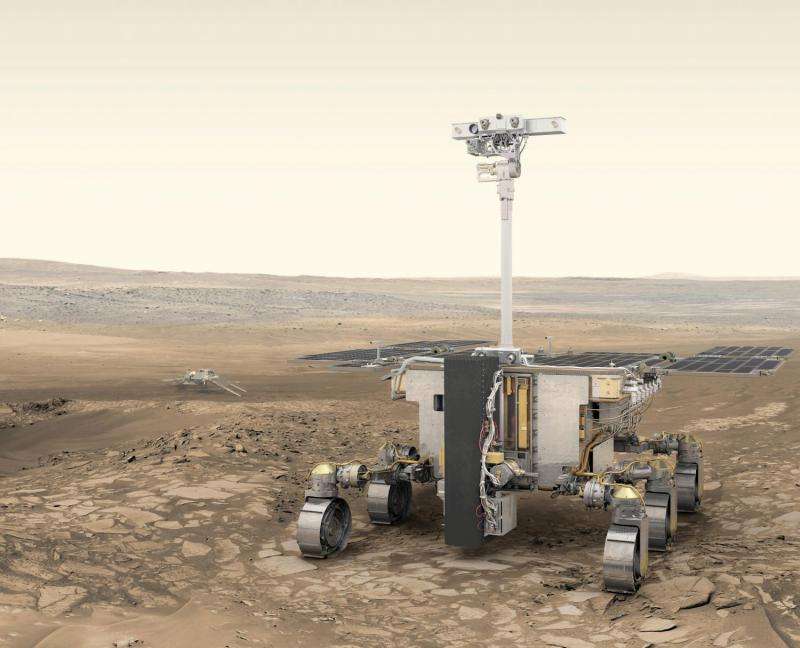Image: ESA's ExoMars rover and Russia's stationary surface science platform

ESA's ExoMars rover (foreground) and Russia's stationary surface science platform (background) are scheduled for launch in July 2020, arriving at Mars in March 2021. The Trace Gas Orbiter, which has been at Mars since October 2016, will act as a relay station for the mission, as well as conducting its own science mission.
Choosing the rover's landing site is a demanding and lengthy process, because it must not only be interesting scientifically but also safe from an engineering viewpoint.
Establishing whether life ever existed on Mars is at the heart of the ExoMars programme, thus the chosen site should be ancient – around 3.9 billion years old – with abundant evidence of water having been present for extended periods.
The rover has a drill (the dark grey box at the front in the view above) that is capable of extracting samples from depths of 2 m. This is crucial, because the present surface of Mars is a hostile place for living organisms owing to the harsh solar and cosmic radiation. By searching underground, the rover has more chance of finding preserved evidence.
From an engineering perspective, the site has to be low-lying, to allow the entry module to descend through enough atmosphere to help slow its descent with parachutes, and it must not contain features that could endanger the landing, such as craters, steep slopes and large rocks.
Checking that all of these requirements are met takes many experts and many years.
In this case, it began in 2013, with eight proposals put forward and subsequently down-selected to four sites in 2014.
By late 2015, one site – Oxia Planum – had been recommended as the primary focus for further detailed evaluation, with two other sites retained for discussion at a later date. That later date has arrived, and experts will this week decide whether it will be Aram Dorsum or Mawrth Vallis that will also be put forward to study in further detail.
Following the decision, an announcement will be posted on the ESA website. Confirmation of the primary landing site and the backup will occur only about a year before launch.
Provided by European Space Agency

















